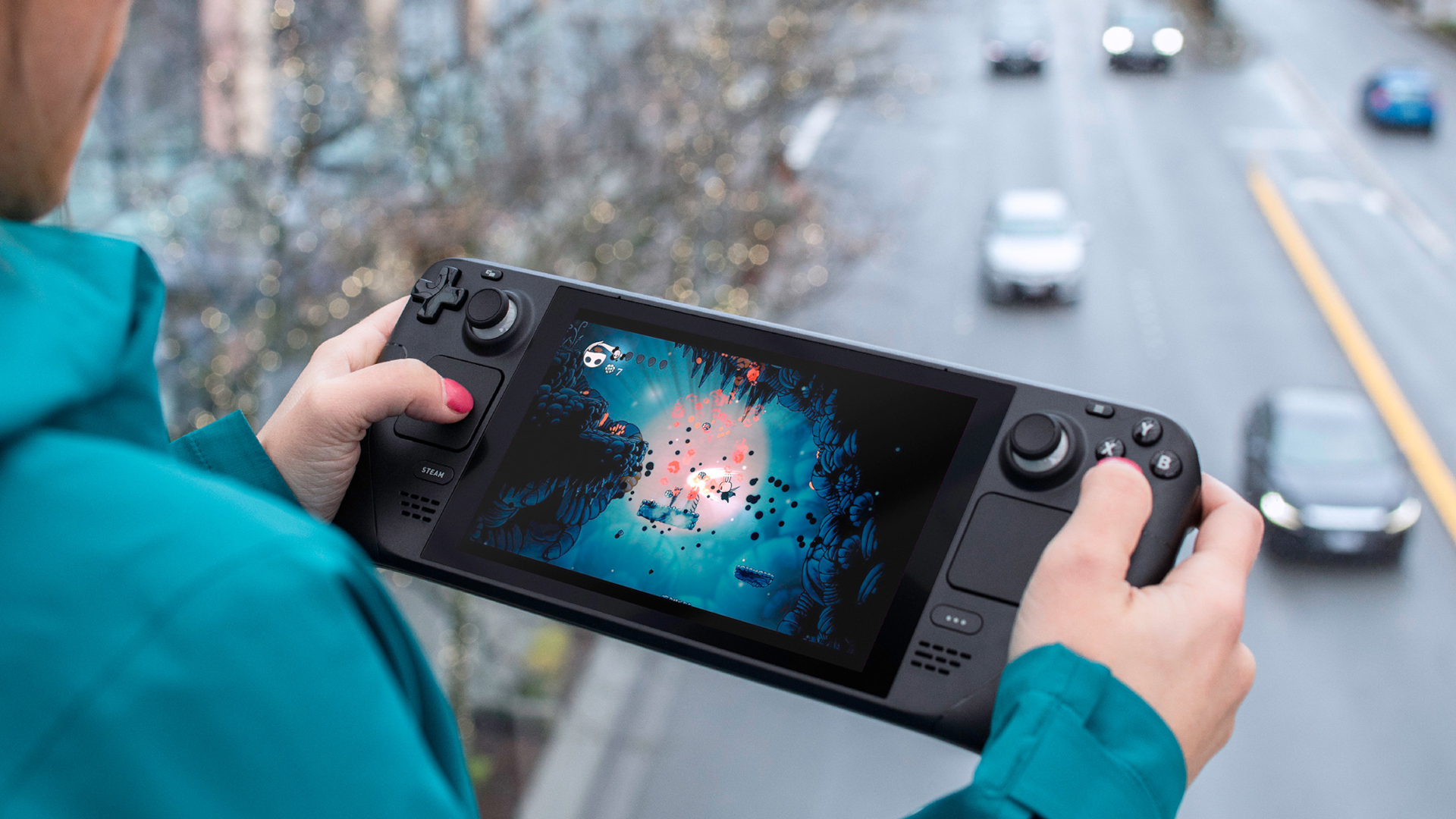- Qualcomm talks 6G innovations beyond speed, integrating AI and IoT
- 6G promises enhanced coverage, and efficiency
- AI-native design will optimize networks and enable new use cases
The transition from 5G to 6G is set to redefine the wireless landscape, offering advancements that go far beyond speed and connectivity.
Qualcomm, a key player in wireless innovation, is building on its 5G legacy to explore the possibilities of 6G, which is expected to integrate artificial intelligence, advanced IoT applications, and seamless connectivity between terrestrial and non-terrestrial networks.
Targeted for deployment in the 2030s, 6G promises to unlock new opportunities across industries and address the growing demands of an increasingly connected world.
In an exclusive interview with TechRadar Pro, John Smee, Global Head of Wireless Research at Qualcomm, discussed the future of 6G, outlining how the company is looking to build upon the advancements of 5G and 5G Advanced.
He also highlighted Qualcomm's role in contributing to the research and development of the technology, explaining that 6G will not only enhance key performance indicators like coverage, capacity, and efficiency but also enable transformative use cases such as digital twins and edge computing.
What are the key technological advancements in 5G that are paving the way for 6G development?
There are quite a few key advancements in 5G and 5G Advanced that are paving the way for 6G. Here are just a few examples:
- Air interface foundation: we believe 6G will build on the OFDM foundation, with a focus on improving coverage, spectral efficiency, and capacity in both legacy FDD and TDD bands as well as new spectrum.
- MIMO/duplex evolution: 6G Giga-MIMO will enable new upper midband spectrum (6-15 GHz) delivering additional wide-area capacity and reusing the existing 3.5 GHz macro cell sites and backhaul. Evolution to full duplex can deliver better coverage and flexibility to meet growing data demand.
- Wireless AI: 5G Advanced kickstarted the era of AI in wireless, improving network/device performance and efficiency. AI will be an integral part of the 6G system design, with AI-native protocols across multiple layers of the stack.
- Wireless sensing: the 5G-Advanced study of integrate sensing and communication (ISAC) can complement positioning to make the wireless network more efficient and open new business opportunities for the ecosystem.
- Integrated TN/NTN: 5G introduced 5G non-terrestrial networking (NTN) by enabling satellites to deliver global coverage leveraging the cellular standard and modem implementations. 6G is expected to build on this foundation to support a seamless interworking of terrestrial networks and NTN.
How do you see the transition from 5G to 6G impacting businesses, and are there specific industries that will benefit the most?
The transition from 5G to 6G is expected to significantly enhance wireless connectivity improving fundamental KPI’s for coverage, capacity, and performance while enabling new services like AI, sensing, and digital twins. 6G will be designed to meet the increasing data transfer needs of connected AI-powered devices. Targeting 2030 deployment, 6G can efficiently enable intelligent computing everywhere creating new opportunities for value creation at the edge. Industries such as healthcare, manufacturing, transportation, and education will continue their transformations to leverage connected AI and the enhanced capabilities of 6G.
Can you explain the role of AI, and specifically Generative AI, in enhancing 5G networks and its potential impact on 6G?
AI is poised to significantly enhance 5G and 6G system performance, operational efficiency, and user experiences, as well as unlock new use cases at scale. For instance, by leveraging AI for network optimization, predictive analytics, and automated configuration, these networks can achieve greater efficiency, reliability, and security. Generative AI can simulate various network scenarios and create synthetic data to train machine learning models, ensuring robust network performance even in complex environments. These technologies enable advanced applications like real-time edge computing, personalized services, and seamless integration with a wide range of devices. Generative AI will also often be implemented on the device and as applications expand this will increase the 5G and 6G communications data demand on uplink and downlink.
AI native is intended to make the system perform better by either replacing functional blocks with AI implementations, or allowing AI to better manage the protocol, network node, device, etc. so that it can adapt more flexibly to support a larger variety of enterprise and consumer experiences. The AI native paradigm can give more implementation flexibility and bring more innovation and differentiation to the devices and networks.
AI native can be in at least the two following forms:
- Replacing existing functionality with AI – e.g., there are a number of use cases in 3GPP (beam management, CSI feedback, positioning, mobility) that are being studied to see if there is a better solution with AI. One aspect of AI native is to include more of these features across layers, protocols and network/device for improved performance with AI. Especially relevant is work in 3GPP and ORAN to improve network automation with AI and the associated use cases. Cross node AI is also a potential example of this where the function is replaced by AI at the network and device.
- Enable AI as a part of the protocol behavior – to change the actual protocols to be defined to be AI friendly so that the protocol can adapt to the combination of radio, device and application state to determine how best to serve the traffic. This changes how the function operates to incorporate AI.
What are the expected benefits of 6G over 5G in terms of speed, latency, and connectivity?
6G will not just be designed to achieve higher speed and lower latency, but it will also focus on bringing significant efficiency enhancements to capacity, coverage, energy consumption, and deployment cost. Additionally, 6G will focus on enabling faster deployment of new services and growing the surface area of operator opportunities. The focus will be driven by use cases to create new value for the broader wireless ecosystem and society.
How will 6G technology influence the development of IoT and generative AI technologies?
6G will bring an integrated design for eMBB and IoT with shared objectives of enhanced connectivity, extended coverage, added functionalities such as positioning and sensing that allow the devices to interact more effectively with their environment, and add more use cases of IoT. Ambient IoT, which will operate without batteries using energy harvesting techniques, will help proliferate low cost IoT sensors and further integrate the physical and digital worlds. Networks and devices will support real-time AI processing and decision-making at the edge, creating value for IoT applications independent of centralized cloud systems.
How is Qualcomm contributing to the research and development of 6G technology?
Qualcomm has a storied heritage in wireless technology, including groundbreaking innovations in 5G technologies. We are building on a strong foundation to advance connectivity across all technologies including 5G Advanced, 6G, Wi-Fi, Bluetooth and more. We are leading the ecosystem in technology research and development, working closely with industry technology leaders such as mobile operators, OEMs, and academia to bring future innovations to life.
How do you envision the future of mobile communication evolving with the advent of 6G?
The future of mobile communication with the advent of 6G is envisioned as a continuum that builds upon the advancements of 5G, focusing on integrating AI into networks and devices. 6G aims to enhance the efficiency and economics of existing and new use cases in the 2030s, such as multi-device plans, fixed wireless services, AR glasses, self-driving cars and elderly-care service robots. The evolution will also involve integrated sensing and communication, enabling new solutions like digital twins and RF sensing. Additionally, 6G will leverage existing infrastructure to provide cost-effective upgrades in existing spectrum on uplink performance and edge data processing, as well as add significant capacity in new spectrum.
You may also like








